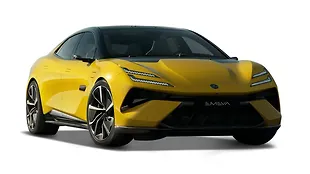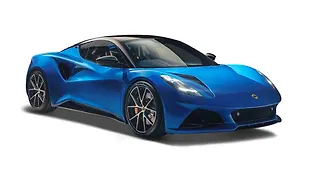What is it?

Why would I buy it?
Sporty design, interior fit and finish, loaded with features and light controls.
Why would I avoid it?
Inconsistent ride quality, no top-end automatic on offer.

What is it?
The Hyundai i10 has been around for over 12 years, and over the course of time, it has received various updates; the 2nd gen Grand i10 being a significant one. This right here, however, is the third-generation model, and it gets a new nameplate - Hyundai Grand i10 Nios. It gets an updated platform and the design has been overhauled significantly, both, inside and out. However, it does not replace the Grand i10; in fact, both the cars co-exist under Hyundai’s two-pronged strategy to take on the rivals. That said, does the Grand i10 Nios have what it takes to dethrone the segment leader, the Maruti Suzuki Swift? We find out.

The design of the Grand i10 Nios is sporty and striking, something that'll immediately appeal to the millennials. It carries the family look upfront, with the large cascading grille, and we are glad that Hyundai has gone for a piano black/silver finish for it. Boomerang-shaped LED DRLs have been integrated into the far corners of this grille, which is a unique design element. What's more, the clamshell bonnet and the sleek projector headlamps add an air of sportiness to the fascia. And completing the whole look at the front are the first-in-segment projector fog lamps.

On the side, 15-inch dual-tone diamond-cut alloys and roof rails serve to highlight the profile. However, lower variants get 14-inch monotone black alloys. Then there's the 'G-i10' badge on the C-pillar, which resonates the Grand i10 brand name. The squat stance and the pronounced wheel arches lend an athletic look to the Nios. Things at the back, though, are rather conventional with wraparound halogen taillights. The Nios branding on the tailgate highlights the cars identity, while the faux scuff plates add some ruggedness to the bumper. The Grand i10 Nios is available in eight exterior colours, including two dual-tone paint schemes.

How is it on the inside?

Hyundai cars are known for their well-appointed interiors, and the Grand i10 Nios is no different. Step inside, and it’s instantly apparent that the cabin is inspired by the Venue and Kona. And it’s not a bad thing at all. The dual-tone grey interiors and the wraparound honeycomb pattern come together quite well to form a cohesive design. Taking centre-stage is an eight-inch touchscreen display, complete with support for Android Auto and Apple CarPlay, Bluetooth connectivity and voice recognition. Higher variants also get an ARKAMYS sound system and Hyundai has also thrown-in wireless charging as a part of the package. Additionally, the dual-tone variants come with dual-tone black interiors with blue/red accents and stitching. And although there are plenty of hard plastics everywhere, the fit and finish is excellent.

While we are at it, let's talk about the seating and space on offer. The front seats are comfortable with good side bolstering, and manual adjustment for height (driver-side). However, it gets fixed headrests, and I felt the under-thigh support could have been better at the front. The view out, though, is excellent thanks to the large glasshouse area. The chunky steering is good to hold and the toggles, switches and various buttons have a solid tactile feel to them. Moving on to the rear seats, what I particularly liked was the impressive under-thigh support. Again, the knee room, headroom and legroom is good, and the backrest angle is perfect. However, fitting three average-sized adults at the back would be a bit of a squeeze. On the flip side, you do get rear AC vents, which is a boon in most Indian cities. The boot space, at 260 litres, is on par with the competition. The loading lip is low, which is a good thing, but a lower boot floor means loading heavy luggage will require quite an effort.

How does it drive?

The Grand i10 Nios is powered by a BS-VI compliant 1.2-litre four-cylinder petrol and a 1.2-litre three-cylinder BS-IV diesel engine. Both these engines are available with a five-speed manual gearbox and a Smart Auto AMT. What we are driving here is the petrol AMT variant in the Sportz trim. And although the motor makes 82bhp and 115Nm, the power is delivered in an extremely linear fashion. While it isn't as peppy as the Swift, it’s no slouch either.

The engine is quite refined and you can barely hear it at city speeds. It is only when you want to make a quick overtake does the engine start being vocal; that too after the 4,000rpm mark. What is commendable, though, is the smooth AMT unit that offers seamless gearshifts. Being an AMT, it is slow to react to throttle inputs, but it gets the work done effortlessly. Hyundai has used electronic gear and clutch actuators that are lighter and offer quicker shifts. You can barely notice any jerks when driven sedately. But drive it with a heavy foot, and you experience a pronounced head-nod.

When it comes to ride and handling, the Nios gets the typical Hyundai traits. For instance, the steering is light in the confines of the city and weighs up considerably at highway speeds. However, it is vague at the centre and doesn't provide much feedback. Then there's the ride. Now, don't get me wrong. It is soft and cushy at low speeds but starts skipping and pitching over undulations at high speeds. The front suspension offers good rebound damping; however the same cannot be said about the rear shocks as the rear feels bouncy, making it uncomfortable for the rear-seat passengers.

Should I buy one?

The third-generation Hyundai Grand i10 Nios makes for a formidable package with its long list of features, build quality, and more importantly, its all-new design. It is furnished with features like automatic climate control, eight-inch infotainment system, reverse camera, SmartKey with push-button start/stop and an industry-first variable warranty. That, combined with the seamless auto transmission and the Korean reliability, not only attracts the millennials but a wide spectrum of family buyers as well.
Where does it fit in?

Priced between Rs 5-8 lakhs (ex-showroom India), it costs significantly lesser (around Rs 35,000 for the top-end trims) than the Maruti Suzuki Swift. Besides the latter, it also competes against the Ford Figo and the Renault Triber.
Pictures: Kapil Angane

![Hyundai Grand i10 Nios [2019-2023] Exterior Hyundai Grand i10 Nios [2019-2023] Exterior](https://imgd.aeplcdn.com/642x361/cw/ec/41959/Hyundai-Grand-i10-Nios-Exterior-168573.jpg?wm=1&q=80)
![Hyundai Grand i10 Nios [2019-2023] Exterior Hyundai Grand i10 Nios [2019-2023] Exterior](https://imgd.aeplcdn.com/642x361/cw/ec/41959/Hyundai-Grand-i10-Nios-Exterior-168574.jpg?wm=1&q=80)
![Hyundai Grand i10 Nios [2019-2023] Exterior Hyundai Grand i10 Nios [2019-2023] Exterior](https://imgd.aeplcdn.com/642x361/cw/ec/41959/Hyundai-Grand-i10-Nios-Exterior-168575.jpg?wm=1&q=80)
![Hyundai Grand i10 Nios [2019-2023] Exterior Hyundai Grand i10 Nios [2019-2023] Exterior](https://imgd.aeplcdn.com/642x361/cw/ec/41959/Hyundai-Grand-i10-Nios-Exterior-168576.jpg?wm=1&q=80)
![Hyundai Grand i10 Nios [2019-2023] Exterior Hyundai Grand i10 Nios [2019-2023] Exterior](https://imgd.aeplcdn.com/642x361/cw/ec/41959/Hyundai-Grand-i10-Nios-Exterior-168577.jpg?wm=1&q=80)
![Hyundai Grand i10 Nios [2019-2023] Exterior Hyundai Grand i10 Nios [2019-2023] Exterior](https://imgd.aeplcdn.com/642x361/cw/ec/41959/Hyundai-Grand-i10-Nios-Exterior-168578.jpg?wm=1&q=80)
![Hyundai Grand i10 Nios [2019-2023] Exterior Hyundai Grand i10 Nios [2019-2023] Exterior](https://imgd.aeplcdn.com/642x361/cw/ec/41959/Hyundai-Grand-i10-Nios-Exterior-168579.jpg?wm=1&q=80)
![Hyundai Grand i10 Nios [2019-2023] Exterior Hyundai Grand i10 Nios [2019-2023] Exterior](https://imgd.aeplcdn.com/642x361/cw/ec/41959/Hyundai-Grand-i10-Nios-Exterior-168580.jpg?wm=1&q=80)
![Hyundai Grand i10 Nios [2019-2023] Image Hyundai Grand i10 Nios [2019-2023] Image](https://imgd.aeplcdn.com/272x153/n/cw/ec/35465/grand-i10-nios-exterior-right-front-three-quarter-2.jpeg?q=80)
























